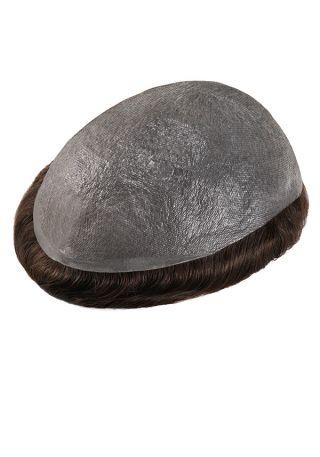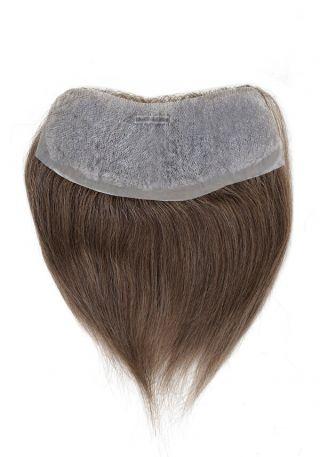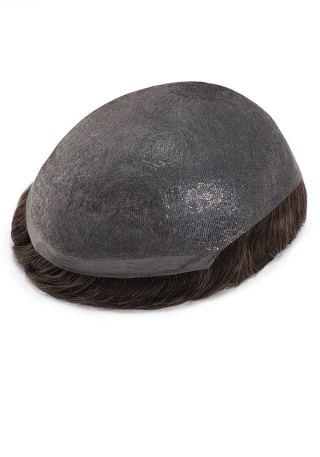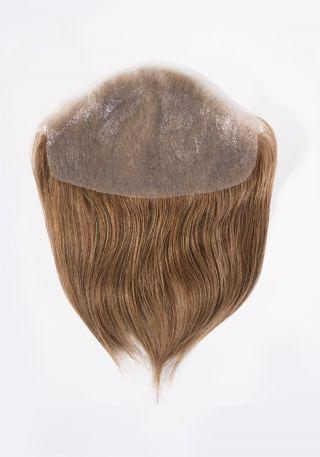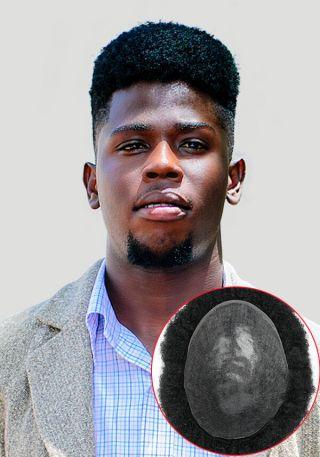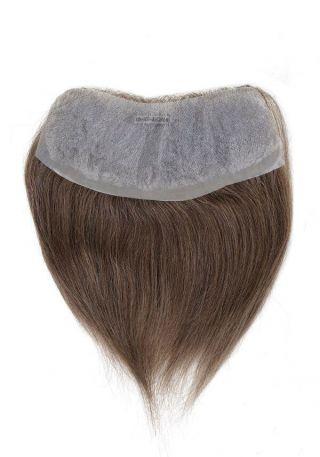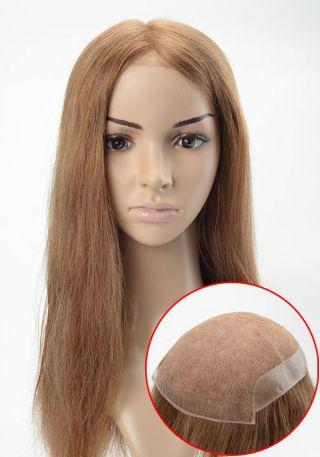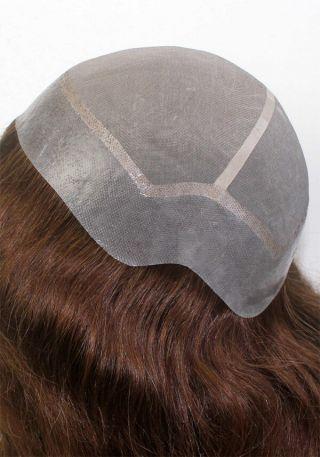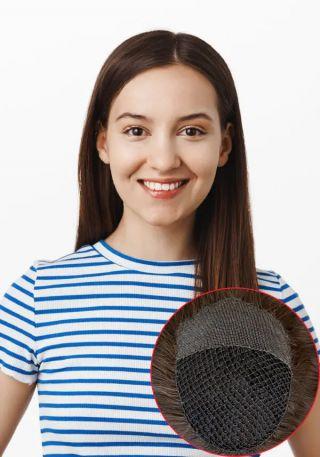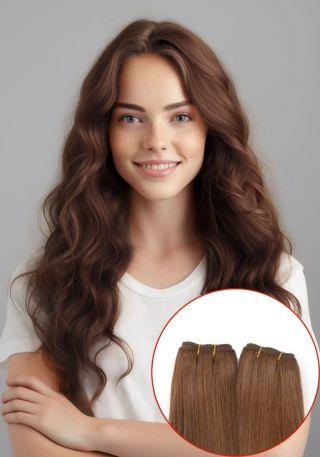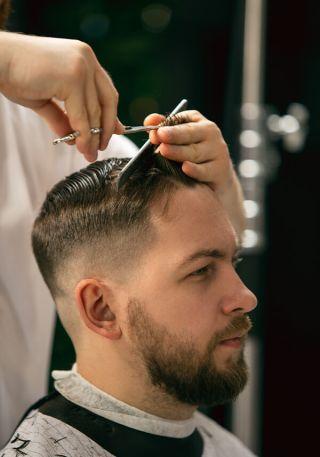What Chemicals Cause Hair Loss?
- Written by Leo Lordhair
- Aug 6, 2022
- |
- 13 min read
 Listen to the full text
Listen to the full text
Hair loss is a problem that affects both men and women. Men tend to lose their hair as they age, but some people experience sudden hair loss at a young age or even earlier in life. If you are experiencing hair loss, it’s important to identify the cause. It is essential to treat the underlying issue before your hair loss gets out of control. If left untreated, a receding hairline can lead to complete baldness.
There are several reasons behind hair loss including genetics, stress, and hormone imbalances. Some chemicals may also trigger temporary or permanent hair loss in sensitive individuals. In this blog post, Lordhair - a leading hairpiece toupee brand - will give you information about what chemicals cause hair loss and how they do so. You will also learn about the potential dangers of these chemicals and what you can do if you suspect that they might be leading to hair loss in yourself or someone else you know.
What Causes Hair Loss?
Hair loss can be triggered by several different factors, including genetics, poor diet, stress, and hormone imbalances. Hair loss is not always permanent; it’s possible to stop and even reverse your hair loss if you identify the cause. The most common reasons for hair loss include:
Genetics
Some people, especially men, are more likely to experience hair loss because of their genetics.
Alopecia areata
This is a condition that causes sudden hair loss. It is not known what causes alopecia areata, but it is believed to be an autoimmune disease.
Androgenic alopecia
This is the most common type of hair loss. It is genetic, and it affects men and women.
Hormonal changes
Changes in hormone levels can cause hair loss, especially in women who experience hair loss as part of menopause.
Stress
Chronic stress can cause changes in hormone levels that can lead to hair loss.
About 90 percent of our scalp hairs are in the active anagen phase, while the remaining 10 per cent are in the resting telogen phase. The anagen phase, which takes about three years to complete, describes the phase of hair development on our scalp. The telogen stage, which lasts between two and six months after the anagen phase ends, marks the end of the hair-growth cycle. New anagen hairs slowly replace the telogen hair after the telogen phase ends, ending the cycle.
When we are exposed to a stressful situation, our bodies prematurely shift a greater proportion of anagen hairs into the telogen resting phase, resulting in an abnormal amount of hair resting and shedding. Normally, we lose about 100 to 150 hairs a day.
Buy human hair integration systems at the best discounts
Chemicals That Cause Hair Loss
It is unlikely that hair products purchased at drug stores or online will cause significant damage to your hair, especially damage that results in hair loss.
There are, however, a few ingredients in hair care products that may negatively impact your scalp or hair follicles if used excessively or incorrectly. We've listed them down below and provided advice on how to minimize their adverse impacts.
Formaldehyde in keratin products
If you want to dye your hair, you may think that it’s better to choose a keratin product over a traditional dye. After all, keratin products are supposed to be gentler on hair. Sadly, this isn’t always the case. And of all the chemicals found in keratin products, none is more dangerous than formaldehyde.
While formaldehyde is a known carcinogen, it’s also often used to preserve dead bodies. But you don’t have to worry about being preserved after using a keratin product. The amount of formaldehyde in these products is minuscule but it is enough to make you lose your hair. The formaldehyde in keratin products is strong enough to break the bonds between the hair follicles, making your hair fall out before it can grow back. If you choose to dye your hair with a keratin product, you may want to think twice.
Shampoos
Some people experience hair loss after using a protein-filled shampoo. While this hair loss is usually temporary, it can be significant. Hair loss can be triggered by the shampoo’s overuse, as it strips your hair of the oils it needs to stay healthy. It can also happen if you use the wrong shampoo for your hair type.
If the shampoo is too harsh, it can weaken your hair, causing it to break. If the breakage goes untreated, it can lead to significant hair loss.

Colouring agents: Hair dye
You might have used bleach and dye in the past to lighten the tone and colour of your dark hair. Using dyes or bleaching products as directed is unlikely to be damaging, but using them excessively may weaken your hair, which might lead to hair thinning and substantial hair loss.
It's also possible to experience scalp irritation, inflammation, flaky skin, and even blisters as a result of dyes and hair colouring products. If you have sensitive skin, even a little direct exposure to certain dyes may be enough to leave your scalp feeling uncomfortable and itchy.
Be careful when using hair dyes and other colouring products to avoid hair loss or scalp irritation, or to have your hair bleached and coloured by an expert.
Strong hold hair styling products
If you love to use hair styling products, you may notice that your hair is getting thinner as time goes on. This is because some styling products can be very damaging to your hair. A chemical found in many styling products is called ammonium hydroxide. If you use products that contain ammonium hydroxide, you can experience significant hair loss. Some people have even reported losing all of their hair after using strong hold hair styling products. But it’s important to note that not all products that contain ammonium hydroxide will cause hair loss.
High-quality hair styling products usually contain a lower percentage of ammonium hydroxide. If you are worried about losing your hair after using a hair styling product, you may want to choose a gentler option. You can also reduce the amount of product you use to limit the damage.
Buy partial wigs to get rid of temporary hair loss and hair thinning
Prescription medications
Antimetabolites, mitotic inhibitors, and alkylating agents used in chemotherapy can cause a form of chemotherapy-induced hair loss called anagen effluvium. Hair loss due to chemical toxicity or inflammation occurs when hair in the anagen phase of the hair growth cycle does not grow correctly. It usually occurs within 14 days of taking prescription medications.
Pattern hair loss is usually permanent; anagen effluvium, on the other hand, causes temporary hair loss. Once the drug has been discontinued, the hair grows back fairly quickly.
Mercury, thallium, and other metals
Your hair follicles may be harmed by heavy metals in addition to chemotherapy medications, resulting in anagen effluvium hair loss. Mercury, boron, cadmium, thallium, copper, and bismuth are all heavy metals linked to anagen effluvium. These metals are frequently used in jewelry, household goods, and industrial supplies and equipment.
In an industrial environment, you may need to beware of these metals, but hair care products do not contain them, so they are not a major risk for most people.
Other Causes of Hair Loss
Androgenetic alopecia and alopecia areata are two common forms of hair loss, but they differ from telogen effluvium alopecia, which causes widespread hair loss. Androgenetic areata is the most common type of alopecia. It results in a receding hairline or thinning on the crown in particular. Male or female pattern baldness is a common term for this type of hair loss. Alopecia areata is an autoimmune condition that causes hair loss. This condition is frequently self-resolving and temporary.
There are certain instances in which scalp inflammation causes hair loss. Psoriasis of the scalp, which appears as red, scaly plaques, can damage hair follicles. Scratching and picking at the scalp, which may also be itchy, may lead to follicle damage and hair loss.
Browse wigs for men at deep discounts
It is also imperative to be conscious of certain hair-care practices that may result in traction alopecia. Traction alopecia can occur if individuals wear tight braids or ponytails for a long time. There are many harsh chemicals used in colouring, relaxing, and perming hair that may cause damage and subsequently result in hair loss.
Hair Loss Types List
Female pattern baldness
Androgenetic alopecia is the name given to thinning of the hair on the top of the head.
Male pattern baldness
Male pattern baldness is one of the most common types of hair loss in men over 50. This type of hair loss, though usually attributable to ageing, can usually be remedied.
Alopecia areata
It is an autoimmune condition that causes hair loss. This condition is frequently self-resolving and temporary.
Scalp psoriasis
It can cause scaly, red plaques to appear on the scalp, resulting in hair follicle damage.
Traction alopecia
Continuous high-tension hairstyles such as braids and tight ponytails can damage hair follicles, resulting in hair loss.

How to Avoid Chemical Hair Damage
Reducing your hair care routine to a few simple changes can have a big positive impact if you are worried about chemical hair damage. Here are some tips to protect your hair and avoid chemical-related hair loss:
- Your stylist can provide you with information about hair colouring, straightening, and perming products. If you visit a hair salon for any of these services, you should inquire about the chemicals used in bleaches, dyes, and styling compounds. The following tips will help you protect your hair and avoid chemical-related hair loss.
Everything about male hair thinning at the crown
- Be careful when purchasing hair care products, as some ingredients may cause allergic reactions, irritation, and even hair loss. Although this is uncommon, checking the labels beforehand is a good idea. Always check the ingredient list when comparing shampoos, conditioners, and other hair products.
- It is best to steer clear of “stronghold” or “long-lasting hold” products. Instead, select styling products that do not pull on your hair roots. Combing your hair after using products that increase hold and thickness may cause hair loss, so avoid doing so.
- Conditioner can improve the look and feel of your hair by moisturizing it. After you shampoo, condition your hair using conditioner. Make sure you condition your hair every time you shampoo it.
- When heat is applied to your hair, it can make damaged hair worse. Avoid blow-drying your hair or using flat irons or other heat styling tools unless they are set to low or medium heat.
- It’s fine to color, straighten or perm your hair, but you should wait eight to 10 weeks between appointments to ensure that you aren't damaging the hair proteins. Choose one service at a time—for example, a colour treatment, perm, or straightening—when you get your hair done. Wait eight to 10 weeks between touch-ups and chemical treatments.
Chemical Hair Loss: Final words
Chemicals can cause hair loss in three ways. They can damage your hair and cause breakage, strip your hair of its natural oils, or trigger changes in hormone levels that lead to hair loss. Hair loss caused by chemicals is usually temporary, but it can be very significant. If you use hair dye, shampoo or other products that contain harsh chemicals, you may want to consider switching to gentler alternatives. This will help you prevent hair loss while still achieving the results you want.
Have queries to ask? Drop them in the comments to get a quick reply from our team of hair experts.
Also, read our recent blog posts:
Everything about hair loss after weight loss
Tips to stop hair loss in teenage guys
Everything about diffuse hair thinning in men
Best methods to stop male hair thinning



